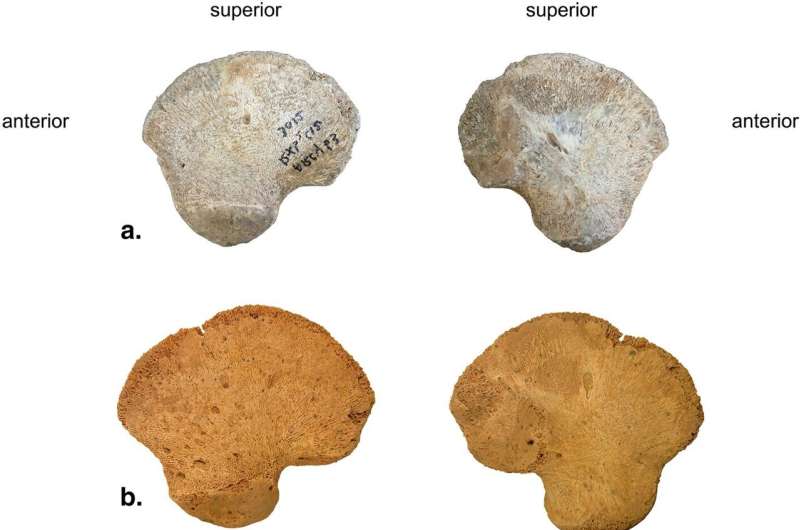August 8, 2023 report
This article has been reviewed according to Science X's editorial process and policies. Editors have highlighted the following attributes while ensuring the content's credibility:
fact-checked
peer-reviewed publication
trusted source
proofread
Hip bone found in cave in France may represent a previously unknown lineage of Homo sapiens

A bone found in a cave by an international team of anthropologists in France may represent a previously unknown lineage of Homo sapiens. The study is published in the journal Scientific Reports.
The Grotte du Renne is a cave in France; it has been the focus of archaeological research for several decades. Such research has shown that there are layers of historical relevance in the cave, with deeper layers representing the time period when the cave was occupied by Neanderthals and higher layers representing the time period when anatomically modern humans (AMHs) occupied the cave.
In between those layers is another that represents the time period when the two hominids may have co-existed. Stone tools found in the layer have been ascribed to an early Châtelperronian techno-cultural complex, though scholars have not been able to agree on whether they were made by Neanderthals, AMH or both. In this new effort, the research team took a new look at a bone that was excavated from the cave decades ago—a hip bone called an ilium.
The researchers found that the bone was from a newborn baby. They also believed that it was not Neanderthal. By comparing it with other Neanderthal bones and against 32 modern baby bones, they found that it did not conform to either species. Its shape was different from Neanderthal and slightly different from AMH. They noted that the odd shape fell outside the bounds of what would be considered normal variation in humans. That, they concluded, suggests the bone represents a previously unknown lineage of Homo sapiens with a morphology that is slightly different from AMH.
The researchers suggest that the tools from the Châtelperronian techno-cultural complex may have been the result of diffusion. Under such a scenario, AMHs would have developed the tools and Neanderthals would have copied their innovations. They also might have modified them to suit their own unique needs, an example of the kind of hybridization that is believed to have existed in many parts of Europe during the time when Neanderthals and AMH coexisted.
More information: Arthur Gicqueau et al, Anatomically modern human in the Châtelperronian hominin collection from the Grotte du Renne (Arcy-sur-Cure, Northeast France), Scientific Reports (2023). DOI: 10.1038/s41598-023-39767-2
Journal information: Scientific Reports
© 2023 Science X Network





















